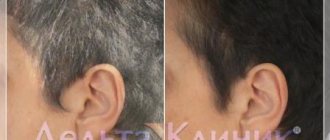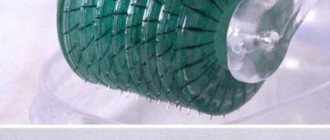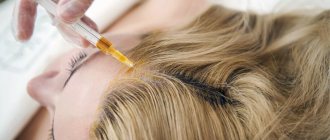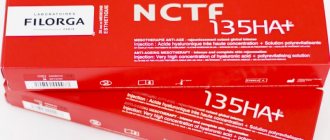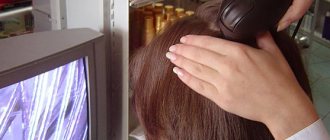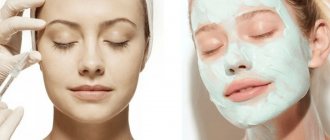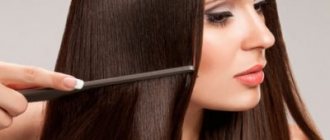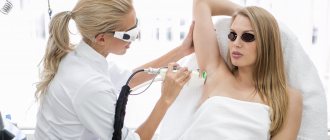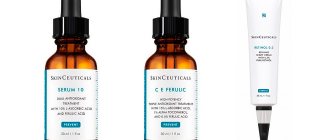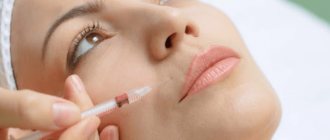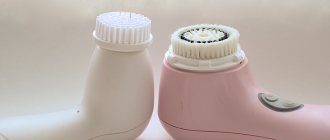Scalp plasma therapy is a method of treating hair diseases based on the use of the body's internal regenerative reserves.
The essence of this technique is the effect of platelet-rich blood plasma on the skin and hair follicles. It is taken from the patient himself, processed and injected into the area requiring correction. One of the functions of platelet blood cells is to stimulate tissue regeneration, so the procedure provokes the growth of new hair and also prevents the loss of existing hair. In addition, microtrauma from the injection also leads to the intensive appearance of new cells.
The vast majority of trichological disorders are caused by a slowdown in metabolism in the skin, deterioration of local blood circulation and the transition of follicles to the resting stage. Plasma therapy for hair and scalp effectively solves all these problems.
A little about plasma lifting for hair
Plasmolifting of the scalp is the introduction into the skin of plasma isolated from the patient’s own blood. Blood plasma contains active platelets and substances necessary for the body to function properly. Plasmolifting prevents hair loss, accelerates hair growth and increases thickness, reduces dandruff and rejuvenates the skin. A course of plasma lifting can overcome even complete baldness.
Before the procedure, venous blood is taken from the patient and the tube is placed in a centrifuge to separate the plasma from other blood elements. Sometimes, for greater effectiveness, drugs that stimulate hair growth are added to the plasma.
Blood for plasma extraction is collected into test tubes coated with gel on the inside. This coating prevents blood components from mixing after centrifugation and preserves the composition of the plasma, ensuring the quality of the drug for injection. Plasma is injected into the skin with needles that create microscopic punctures, or with a syringe with replaceable needles.
Techniques
- Linear intradermal - administration of the drug on the reverse stroke of the needle.
- “Nappage” is the introduction of minimal doses of a substance to the treatment area. The skin is slightly injured, but a large loss of the drug occurs.
- Papular - intradermal injection with the formation of microtubercles at a distance of 1.5 - 2 cm from each other.
- Deep injection - used to correct local fat deposits during mesotherapy.
The puncture depth is up to 3 mm for both methods.
Ingredient introduction methods
When plasmolifting, only the manual method of administration is used.
For mesotherapy, a mesoinjector (a special gun with needles) or a manual method (using a syringe) is used.
Characteristics of components
In mesotherapy, there are drugs with a wide spectrum of action to solve specific problems.
Differences in the type of active substances
- Allopathic - vitamins, minerals, oligoelements, lipolytics.
- Homeopathic - includes only plant substances.
Differences in the number of components
- Monopreparations - contain only one active component, for example, hyaluronic acid, artichoke extract, vitamin C.
- Individual “cocktails” are meant to be prepared independently by a doctor.
- Complex preparations - contain several biologically active substances to solve specific problems, for example, to reduce age spots, correct cellulite, treat seborrheic dermatitis.
Differences in mechanism of action
- Hyaluronic acid 0.3-1% - stimulates protein synthesis, provides natural skin hydration (KOSMO-DMAE KOSMOTEROS with hyaluronic acid 1.2%, 1% DMAE and red grape extract for express lifting and super-hydration).
- Artichoke extract - reduces the severity of cellulite and swelling (artichoke concentrate ARTICHOKE CARE KOSMOTEROS).
- Antibacterial agents - for inflammatory processes (acne).
- Vitamin C - brightens and rejuvenates the skin (meso-cocktail with vitamin C KOSMO-C KOSMOTEROS).
- B vitamins - regenerate the skin, strengthen hair follicles, stimulate renewal processes. The drugs are in liquid form.
In plasma lifting, the main active ingredient is its own biostimulating plasma of a gel structure. Platelet autoplasma is obtained by taking blood from the antecubital vein from a patient, followed by processing in a centrifuge (special apparatus). Centrifuged plasma is saturated with intercellular fluid and contains a large amount of vitamins, proteins, and immune complexes that stimulate cell restoration and hydration.
The price of manipulation depends on the choice of technique, resource consumption, skin condition, area of influence, dosage and number of sessions.
Pros and cons of plasma lifting
Plasmolifting is a safe and natural technique. The human body does not reject its own blood plasma, it does not cause allergic reactions. General anesthesia is not required for plasma lifting; it is enough to numb the scalp only. You don’t have to prepare for this procedure for a long time, and the results from the course last a long time.
The many advantages of plasma lifting do not cancel out some of its disadvantages. Negligence and unprofessionalism of a doctor can lead to infection with serious diseases - for example, hepatitis.
Carry out rejuvenation at OLA centers to be confident in the results and safety of the method.
The cost of plasma hair treatment is quite high, so not everyone can afford to undergo these procedures. Other problems - such as the activation of viruses already existing in the body - can be avoided if you pass all the tests before the plasma lifting procedure.
Contraindications:
- inflammatory skin diseases at the site;
- chronic cardiovascular pathology (hypertension stage 3, coronary artery disease stage 3);
- chronic renal failure, nephropathy;
- 3rd trimester pregnancy;
- cholelithiasis;
- acute febrile illnesses;
- impaired blood clotting as a result of disease (hemophilia), as well as with the use of anticoagulants and antiplatelet agents (heparin, coumarins, aspirin, ticlid);
- individual drug intolerance.
How is the procedure performed?
Before the procedure, the patient is interviewed and examined. A blood test for biochemistry and testing for HIV and other diseases is mandatory. When the specialist is sure that plasma exposure is suitable for the patient, the procedure itself begins and takes place in 3 stages:
- Blood collection. About 20 ml is required. Blood can be donated in larger quantities in order to keep it frozen until the next session.
- Plasma department. Centrifugation takes 5-15 minutes.
- Injection of plasma into the scalp to a depth of 1 mm. Before injections, the specialist treats the area selected for plasma lifting with an antiseptic to protect against infection. Several deeper injections are placed in the crown area. Nutrients are stored in this zone. In total, an average of 60 injections are given per session. The session lasts about an hour.
2-3 days before the start of the course, stop taking medications that slow down blood clotting. Patients are advised to replace fatty and sugary foods with healthier foods and stop drinking alcohol. Combining plasma lifting and other cosmetic procedures is not recommended. You should come to the session hungry.
Plasmolifting of the scalp is a painless procedure; anesthesia is not required for its implementation, however, slight discomfort may occur during the treatment of particularly thin areas of the skin.
For the best effect, plasma lifting is carried out in a course. It is enough to attend 5-7 sessions to restore your hair to its healthy appearance. The effect of plasma on the scalp lasts for two years, after which time the course is usually repeated.
Where to do plasma lifting
Treatment of hair and scalp with plasma can only be safely carried out in a specialized clinic or beauty center. Only an experienced and highly qualified doctor can ensure healthy and thick hair.
Pay attention to what tools a cosmetologist or trichologist uses. All accessories for plasma lifting must be sterile and disposable. The client has the right to know whether the tubes into which blood is collected for the procedure have expired. During the session, the plasma lifting specialist must replace the needle at least four times.
Benefits of Cortexil PRP Therapy
Many technologies do not allow achieving a therapeutic level of platelet concentration, that is, they do not guarantee the effectiveness of plasma therapy for hair. To obtain high-quality PRP, you need a special centrifuge, carefully selected centrifugation modes, devices for selecting the required plasma layer, and a special anticoagulant. Failure to meet these important criteria leads to a low concentration of platelets, their premature destruction and untimely activation, which makes the procedure ineffective.
Our medical center in Moscow uses patented medical technology Cortexil PRP. This is a modern, innovative method, which takes into account all the “weak points” of previous kits for PRP therapy, and therefore is one of the most effective. Cortexil PRP technology meets the basic conditions for obtaining therapeutically effective PRP: platelet viability and growth factors, as well as optimal cell concentration, in accordance with the efficiency standard of 1,000,000 platelets in each microliter of plasma.
Hair care after plasma lifting
Following simple rules for caring for your scalp and hair after a plasmatherapy session will allow you to achieve high-quality results from the procedure.
- Washing your hair will have to be postponed for at least a day, and if possible - for two days.
- Protect your scalp from sunlight.
- Combing can damage the scalp on the first day after a plasma lifting session, and it is better to refrain from cutting and styling your hair for three days.
- It is highly not advisable to make hair masks within a week after the procedure.
The doctor sometimes prescribes a vitamin complex to strengthen hair. You need to take vitamins according to the instructions.
When the plasmolifting course is over and the scalp is finally restored after the injections, special care is needed to prevent hair loss and maintain its strength. Balms, masks and oil-based products will help you protect your hair on your own. Castor, burdock or coconut oil is good.
Other Hair Treatments
You can restore the health of your hair and scalp not only with plasma lifting, but also with other methods.
- Mesotherapy is the introduction into the scalp of a mixture of vitamins and other components that accelerate hair growth and get rid of dandruff. This procedure is suitable for those who are afraid of needles and injections, since there is also non-injection mesotherapy - exposure to electric current, ultrasound, laser or cold.
- Regenera Activa's technology for the treatment of alopecia is based on the use of cells from one's own hair follicles. The drug is prepared immediately before the procedure and is immediately injected into the bald areas of the scalp. The procedure will help with age-related hair loss. The use of Regenera Activa technology is unacceptable if the patient has thyroid disease.
- The ACR method is very similar to plasma lifting; not only the patient’s blood plasma is used, but also other blood components - fibrin and thrombin.
Attention to qualifications
In order to achieve the maximum effect from plasma therapy, the procedure must be carried out by qualified cosmetologists with strict adherence to guidelines and instructions.
Medical cosmetologists have not only undergone appropriate training, but are also fluent in the technology of plasma therapy. Thanks to strict adherence to standards, this procedure in our center is not only safe, but also allows you to achieve an excellent visible effect in a short time.
Trust your hair treatment to professionals. Call the medical office at numbers 2.9 in Samara and come for a consultation with a cosmetologist.
Which is better: plasma lifting or mesotherapy
The essence of these two methods of treating hair and scalp is the same: a nutritional drug is injected into the skin using injections. The difference is in the composition of the drug - with plasma lifting, the injection consists of the client’s blood plasma, and with mesotherapy, the syringe contains a cocktail of nutrients.
Safety
Plasmolifting procedures are much safer than mesotherapy, because... injections of a natural substance compatible with the body do not cause allergic reactions. An injection containing a mixture of chemicals has unpredictable health consequences. There are many more contraindications for mesotherapy than for plasma lifting.
…
Efficiency
Mesotherapy also has an advantage over plasma lifting. The effect of this procedure occurs almost immediately. However, the results of plasma exposure last longer, and the course of mesotherapy will have to be repeated several times a year to maintain healthy hair.
…
Complexity
Mesotherapy is a simple procedure; it does not require blood sampling. To carry out plasma lifting, you need special tubes, needles, and a centrifuge.
…
Side effects
Hyperemia (redness) is a natural consequence of increased blood circulation.
Pain - the degree of painful reaction depends on the individual threshold of pain sensitivity, the state of the nervous system, the drugs administered and the injection technique used. In case of increased sensitivity, apply a cream with an anesthetic 20-30 minutes before the procedure.
Hematomas occur when the integrity of the vascular wall is disrupted.
Allergic reactions are a response mechanism to drug components. Preliminary research and selection of ingredients is important. With plasma lifting, allergies practically do not occur, since plasma is an autograft, a natural physiological component.
